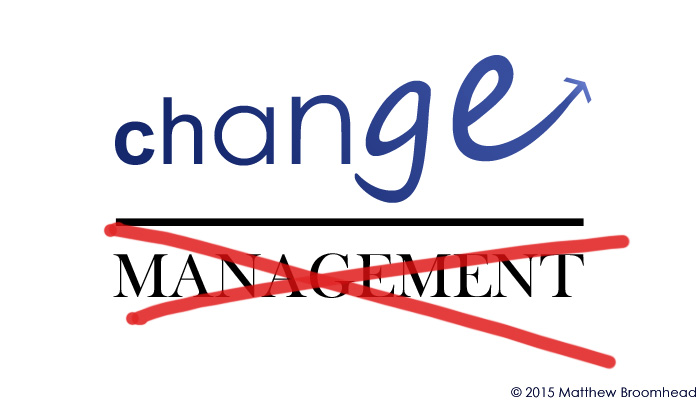 A phrase that seems to be popular in many business mid-managers’ lexicons is “Change Management”.
A phrase that seems to be popular in many business mid-managers’ lexicons is “Change Management”.
If we can spend a moment to take a step back from the challenges in our day to day jobs and explore this phrase with a slightly different angle, then you may agree with me that there really is no such thing.
“Change management” is surely an oxymoron.
Instead of exploring the actual processes of Change Management which typically includes defining and implementing the deliverables; cost; time; risk etc, let’s look at the bigger picture and briefly explore why it is an oxymoron:
“Change” – Change is not easy. As I’ve discussed in my other Articles, most of us don’t like change. Our brains are wired to keep us safe and change usually appears (initially) to be unsafe.
Despite this the marketplace continues to evolve. According to McKinsey the average life span of a company on the S&P 500 stock market index in 1935 was 90 years. In 2010 it was 14 years. They predict half of those won’t be there in 2017, for a variety of reasons. This means a significant adjustment to the way we work and the old saying of a job for life with the same company.
“Management” – The term Management is a method from an old outdated industrial model that worked then and still does to a limited extent in certain parts of the world. It is defined as the process of dealing with or controlling things or people.
No-wonder many people find “Change Management” hard to define and understand. “Change” doesn’t come from monitoring and checking something (which are the primary skills of Management).
Persistent long term Change within an organisation only comes through inspiring someone to think and behave differently (which are the skills and qualities of Leadership).
Therefore if it is called anything, it should really be described as “Change Leadership”.
“Ok Matt”, some people might be thinking, “that’s all well and good (and rather observant of you to notice), but that doesn’t actually help me and my organisation. The work environment is altering and our well defined Industrial-Age “inter-changeable” jobs are becoming harder to find. Today we need people to change more quickly and willingly.”
Understood! So here are my Six P’s to Successful Consistent Change in an organisation:
Purpose : We need to know where we want the organisation to be and the value that it will offer. Before starting we also need to know where we currently are.
People : Do our teams have the necessary skills and attitude to see the change through.
Plan : We require a clear plan of how the change will be achieved including an acceptable level of contingency planning.
Produce : Once we have a good idea of where we are moving the organisation and how to do it, then the next stage is to take action. This is where a lot of us stumble.
Persistence : Depending on the size of the organisation and the level of change required, then to keep it going and progress, we need to ensure that the initial boost at the start is maintained throughout.
Personalities : This last element runs throughout all the other five parts. Who are the individuals (not just the MD) that will continue to drive the implementation by leading from the front and demonstrating the new behaviours, as opposed to just telling employees what they should or shouldn’t be doing.
As we all know change is inevitable. We can either have it forced on us or we can inspire the change. But one thing you cannot do is “Manage” change.


